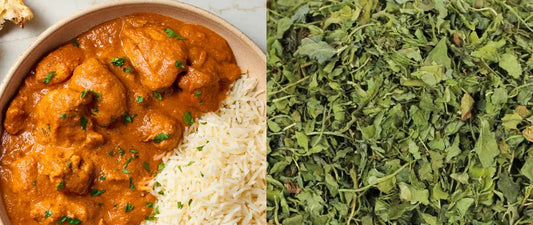
What is An Indian Spice Box? (Masala Dabba)
Table of Contents
When you step into an Indian kitchen, one of the first things you'll notice is a round steel container filled with a variety of colourful and aromatic spices. This is called a 'Masala Dabba'. The word 'Masala' refers to a blend of spices, while 'Dabba' translates to box. So, 'Masala Dabba' essentially means 'Spice Box'.
In this article, you'll learn all about the masala dabba, such as:
- What a Masala Dabba is
- The History of the Masala Dabba
- Its cultural significance in Indian households
- The common spices found in a Masala Dabba
- How to use a Masala Dabba
What is a Masala Dabba?
A masala dabba, also known as a spice box, is a popular stainless steel spice storage container widely used in Indian kitchens. It is typically a round or square box that houses several small cups, often seven, each holding a different spice. The modern boxes have transparent lids and display the contents inside. A small spoon, approximately 1/2 teaspoon size, usually accompanies the box. This arrangement allows for easy access and efficient use of spices during cooking.

The History and Cultural Significance of the Masala Dabba
The origins of the Masala Dabba can be traced back to ancient India, where spices were used in both cooking and medicine. As trade routes expanded and different cultures came into contact with Indian spices, the demand for them grew. The Masala Dabba, with its practical design and cultural significance, became a staple in Indian households. In many Indian homes, the Masala Dabba is passed down from generation to generation, symbolising the rich cultural heritage and the diversity and complexity of Indian cuisine.
What Spices to Put in a Masala Dabba
The Masala Dabba typically holds the most commonly used spices in Indian cooking. These include:
- Cumin Seeds: Cumin is an essential condiment in Indian cuisine, which has a pungent flavour and is rich in aroma. Cumin seeds are considered a seasoning ingredient and ground cumin as a flavouring agent, especially in North Indian cooking. They are usually fried in oil and added to the food at the beginning or end of the recipe.
- Black Mustard Seeds: Mustard seeds are the most commonly utilised form of mustard in Indian cooking, with the powder rarely, if ever, being used. They are often kept whole and fried (or toasted) before adding to a dish or included in a stir-fry along with other ingredients.
- Turmeric: Turmeric is a mainstay spice in Indian cooking, used for centuries as a dye, food colouring, flavour agent, and an ingredient for traditional medicine. It is used mostly in savoury dishes, but also some sweet dishes.
- Red Chilli Powder: Indian red chilli powder is a staple in Indian cuisine and is used in a variety of dishes. It can be added to curries, stews, soups, and even marinades for meat and vegetables.
- Coriander Powder: Coriander powder is widely used in south Indian preparations, especially rasam, kara kuzhambu, vegetable preparations, etc. It is an essential ingredient of many curries and gravies as it has a mild aroma that instigates the appetite.
- Garam Masala: Garam Masala is a traditional spice blend used in Indian cooking. It not only flavours and adds zing to your Indian food but also provides numerous health benefits. Garam masala is usually added near the end of cooking so that it not only seasons the dish but adds to the aroma.
- Cardamom: There are two kinds of cardamom used in Indian cooking: green and black. Green is the more common variety, used for everything from spice mixes to lassis to Indian desserts. Many Indian and Indian-inspired dishes call for cardamom, including curry dishes, Kheer (Indian rice pudding), and chai.
Each of these spices has a distinct flavour and is used in different dishes and cooking styles throughout India.

Read more: 10 Must-Have Indian Spices for Your Kitchen.
How to Use a Masala Dabba
Using a Masala Dabba is straightforward and efficient. To set it up, fill each small container (Katori) with the spices you use most regularly. When cooking, the Masala Dabba is kept at hand, allowing you to readily add spices and adjust their balance during cooking. The spices stay fresh with a single large lid, fit for the dabba itself. Every couple of months, review your dabba and adjust the spices according to your cooking habits.
Read more: 7 Simple Tips to Maximise Freshness of Spices.
Where to Buy a Masala Dabba
Masala Dabbas can be purchased both online and in physical stores. They are also available in Indian grocery stores and specialised kitchenware stores. Prices and designs vary, so you can choose one that best suits your needs and preferences. However, you might be better off buying in physical stores where you can see the product firsthand and find your preferred one. This way, you can ensure the quality and suitability for your specific needs.
Conclusion
The Masala Dabba is more than just a spice storage container. It's a symbol of the rich culinary tradition of India, a testament to the country’s love for spices, and a practical tool that makes cooking an enjoyable experience. So, why not bring a piece of the Indian kitchen into your home?



1 comment
I’ve seen these before and thought how convenient! Thanks for this information